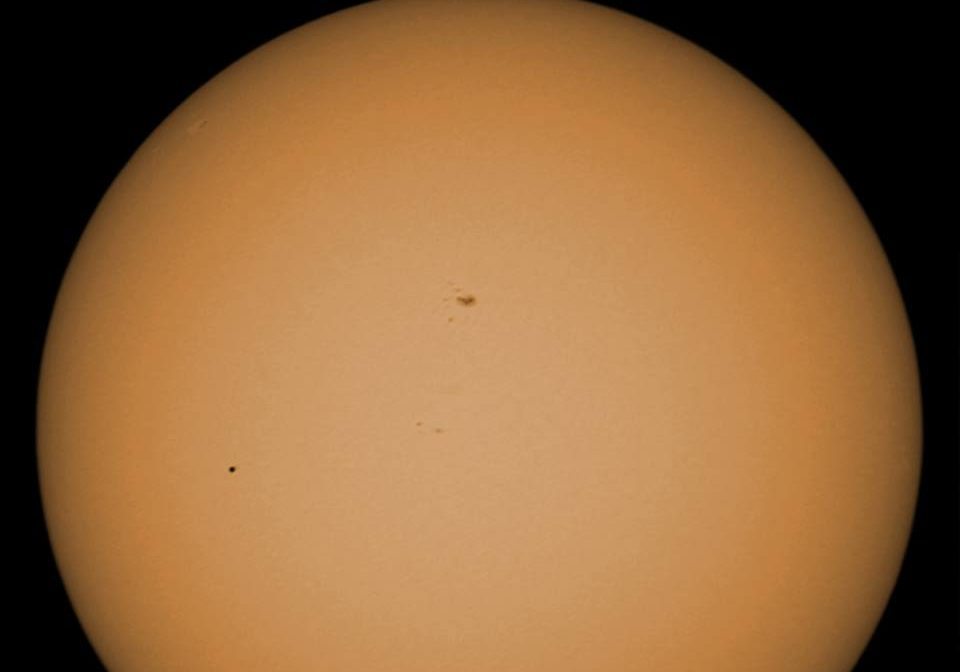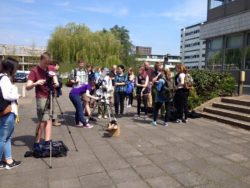AstroSoc presents: Mercury in transit
Between 12:12 and 19:42 on Monday 9 May, Mercury passed in front of the Sun during a rare astronomical event known as a transit. These occur approximately 13 times each century, with the next taking place in 2019.
Transits of Mercury are quite rare, as the planet often passes just above or below the Sun instead. Their rarity aside, Mercury transits have held a certain historical and scientific significance ever since the first observed transit of Mercury in November 1631, which was predicted by Johannes Kepler.
While observing a Mercury transit in 1677, Edmund Halley proposed a method of measuring the distance from the Earth to the Sun (the Astronomical Unit, or AU) using a transit of Venus. Halley’s idea involved measuring the time taken by Venus to cross the disc of the Sun from different locations on Earth, and using geometry to work out the value of 1 AU.
Nowadays, astronomers use transits in a slightly different way: to detect planets orbiting distant stars. Exoplanet transit surveys look for a slight dip in brightness of a star, caused by a planet passing in front of it. This dip, or light curve, can actually tell us a lot about a planet’s size and orbit. Recently NASA’s Kepler mission announced it had discovered 1,284 new planets using this method.
The newly formed Warwick Astronomy Society held a drop-in observing session for interested students and staff during the first four hours of the transit.
We used a selection of telescopes to safely observe the Sun: we projected the light through a reflecting telescope onto a piece of paper, and used both a refracting telescope with a solar filters and a specialist Hydrogen-alpha telescope to look directly at, and image, the Sun.
Recently NASA’s Kepler mission announced it had discovered 1,284 new planets using this method.
Warwick Astronomy Society’s debut event was made possible through collaboration with Dr. Anne-Marie Broomhall of the Centre for Fusion and Space Astrophysics (CFSA) and Professor Tom Marsh, head of the Astronomy and Astrophysics research group.
Warwick Astronomy Society is planning a variety events across the next year, and we welcome all backgrounds and abilities. Find us on facebook and twitter at @warwickastrosoc.


Comments (1)